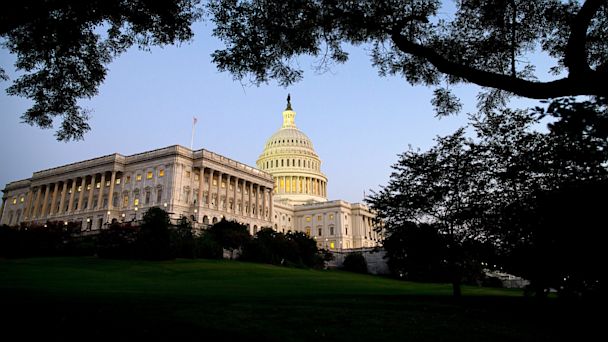Republicans Establish Senate Edge, Despite Themselves

(Evan Vucci/AP Photo)
ANALYSIS
Voters say they like Democratic ideas. But they also say they're ready to elect more Republican candidates.
That's a key takeaway from the latest ABC News-Washington Post poll. As 2014 gears up today with the first primaries of the year, there's a Democratic edge on issues - the minimum wage, being in touch with people's concerns, even health care - and yet an emerging preference for sending Republicans to Congress.
The battle for the Senate, where Republicans are six seats away from retaking the majority, tells much of the story.
On that question, the new poll demonstrates a critical reason that Republicans stand a strong and, arguably, growing chance of wresting control of all of Congress, almost despite themselves.
When registered voters nationwide were asked whether they'd vote for a Democrat or a Republican to the Senate, it's a virtual tie: a 46-45 numeric Democratic edge, in the new poll.
But when responses are pulled only from the 34 states that are electing senators this year, a GOP advantage emerges. Republicans have a 50-42 edge in the states with Senate elections.
READ: Texas Primary 2014: 6 Things to Watch For
Why the difference? The map tells much of the story. More red states than blue are electing senators in 2014, and that leaves Democrats playing far more defense than offense. (Two Republican-leaning states - Oklahoma and South Carolina - are filling both of their Senate seats this year.)
Democrats are defending seven seats in states Mitt Romney carried in 2012. That's in part a result of President Obama's 2008 coattails, because Senate seats filled that year are up this year.
Democratic strategists have been quick to question the relevance of the edge in the so-called generic ballot, arguing that Senate races often turn on intensely local factors.
"Millions of dollars are spent by both sides in Senate races introducing the candidates and defining the choice between the two people on the ballot," said Matt Canter, deputy executive director for the Democratic Senatorial Campaign Committee. "Senate races turn on the new information voters receive about each candidates, and a generic national ballot is of little use when the demographic, ideological and partisan make up of each state differs so widely."
On Twitter this morning, Democratic pollster Mark Mellman, who works with a range of red-state Democrats, pointed out a potential population-size quirk, because ruby-red Texas is by far the largest state holding a Senate election this year: "B careful. lots more votes 4 TX rep than 4 RI dem. both elect 1 sentr."
Texans represented about 15 percent of poll respondents in the states with Senate races, according to ABC News polling director Gary Langer. Taking out their responses still give Republicans a Senate edge, just a touch smaller, at 49-43.
If anything, events of recent weeks have pushed up the likelihood of a Republican Senate takeover.
Tea party primaries that could produce flawed GOP nominees are looking less likely to threaten incumbents. A new Republican recruit in Colorado is putting even that purplish-blue state on the map, and outside analysts are saying Democrats may struggle to hold on to a seat in Michigan as well.
Democrats continue to be able to count on an issue portfolio that voters say they prefer. On the question of whether the parties are in touch "with the concerns of most people in the United States today," Republicans face a yawning 40-point deficit. Democrats run even, 48 percent saying yes and 48 percent no.
But Democrats continue to face headwinds from a lagging economy and less-than-popular president, while running uphill in the Senate because of a titled map.
It leaves Republicans in a powerful position to take control of all of Congress, even if voters say they dislike them even more than they do Democrats.